If you’ve ever watched the sun set behind a row of cypress trees, with a glass of wine in hand, you’ll understand why Tuscany holds a special place in my heart. Living here, the rituals of wine are hard to ignore. They are woven into the landscape, seasons, and culture itself.
I love a glass of wine with my supper. It makes food more savory. It loosens conversation. It lightens my thoughts. Sometimes, it even helps me find the right adjectives.
Wine brings color to the table, literally and figuratively. It sparks opinions about tannins and sulfites, sweetness and dryness, oaked or unoaked. It can turn a Tuesday into a celebration, and it adds the perfect note to a simple pasta dish.
So, today, I invite you to sip your way through Tuscan vineyards with me; not drinking coffee together this time, but sharing a glass (or more!) of vino, instead!
La Primavera (Spring)
I like to bike through the countryside in early spring, when the air is still crisp and the vines lie dormant with bare trunks, waiting patiently for the sun’s warmth. As I pedal past kilometres of vines, I wonder: Will they wake in time? Will the leaves manage to burst forth and bring a new bounty of beautiful grapes?
By the end of March, I begin to notice some tiny buds, small promises of life to come. And still, I catch myself thinking: Come on, get going! I fret they won’t make it in time, won’t grow tall and full by August, and miss their chance to turn into that glorious fermented juice we love so much.
By early May, the sun grows warmer and the countryside begins to bloom. My favorite sign of the season? Red poppies. Bright and bold, they fill entire fields along the road to San Gimignano.
The vineyards are lush with green leaves now. Upon close examination, I spot tiny grapes beginning to take shape. Only then do I start to relax, thinking: They’ll make it.
Interestingly, I also spot rose bushes in some vineyards. No, they’re not there just to make the grapevines look pretty; their presence is, in fact, rooted in a long-standing practice.
Roses and grapevines are susceptible to many of the same fungal diseases. But roses tend to show symptoms earlier than vines. For generations, winemakers planted the flower bushes as an early warning system: If the roses began to wilt or spot, it was a sign that the vines could soon be in danger.
Today, in an age of scientific monitoring and lab-tested sprays, you won’t see many roses in vineyards. But when you do, think of them as a quiet homage to the old ways.
L’Estate (Summer) Combining usefulness with pleasure
This is the season I shift from absolute leisure to work. Um…work? Well, sort of. From April to October, I lead bike tours through this landscape, meeting wonderful people from around the world. I get to ride alongside them, show them Tuscan vineyards, and share tastings of local wines.
Click here for the E-Bike tour
The region of Tuscany is home to some of Italy’s most iconic wines, Chianti Classico, Brunello di Montalcino, Vino Nobile di Montepulciano, and the so-called Super Tuscans, those rebellious blends that broke the rules and changed everything. (Though we won’t say too loudly that Italians learned a few tricks from the French when it comes to mastering the art of winemaking.)
In 2024, Italy exported over €8.1 billion worth of wine. These are wines born from careful craftsmanship, made by hands that know the land intimately. Organic viticulture has taken root across the country, and Tuscany is leading the charge. Many producers embrace low-intervention techniques not only because it’s trendy, but also it reflects deep respect for the land.
Living here, I’ve come to appreciate how an estimated 75 percent of Tuscan wineries are family-owned. These aren’t just businesses, they’re legacies.
Now let me take you with me to some of my favorite spots, and share the stories and photos I’ve collected along the way.
The Vineyards
Teruzzi-Vernaccia
One of my tours brings us to San Gimignano, where a stop at Teruzzi winery is mandatory. Founded in 1974 by Enrico Teruzzi—with the help of his wife Carmen—it’s now the largest private producer of Vernaccia di San Gimignano.
As millions of years ago, much of Tuscany was covered by sea, you’ll now find marine sediments, limestone, clay, fossilized shells—all of which give the soil its mineral richness. This makes it perfect not just for Sangiovese, but for white wines, too.
In a land known for its bold red wines, we discover a white one that can knock your socks off, (especially if you overdo it!) After a tour of the winery, we sit down for lunch, enjoying pecorino cheese and prosciutto, followed by ribbolita, a traditional Tuscan bread soup.
To anwaken our taste buds, we begin with a young Vernaccia called Isola Bianca (White Island). The name reflects its uniqueness. This white wine stands like an island amid a sea of reds. It’s soft on the palate and light, rendering it perfect for an afternoon aperitifo.
But my favorite is the Riserva Sant’Elena. It’s broad and complex, with floral and citrus notes that blend beautifully with the wine’s minerality.
Luana and Martina are knowledgeable hosts, and their warmth always makes me feel like part of the family.
Rocca delle Macìe
You may not know Italo Zingarelli, but if you’re a fan of Spaghetti Westerns, he was one of the great producers of the genre. In 1973, he bought a 14th-century hamlet near Castellina in Chianti. With just two hectares under vine, he began transforming the 93-hectare estate into Rocca delle Macìe, a wine-producing dream he shared with his wife and pursued with zeal.


He poured much of his film fortune into a land he believed in. A gamble he won.
Today, his children Sandra, Fabio, and Sergio carry on the tradition. If you're in Canada or the U.S., you can find their wines at your local liquor store. What I love most is that they make high-quality wines at fair prices, a €25 Chianti Classico Riserva that rivals something four times the cost.
When I visit Rocca delle Macìe, I feel a perfect blend of old and new, and the views are breathtaking. Oh, and I love their large Gallo Nero (Black Rooster) steel sculpture! Let me tell you about it.
The Gallo Nero is the historic symbol of the Chianti Classico wine region in Tuscany. It signifies that the wine comes from the original and most prestigious area of Chianti and meets strict quality standards. But why a black rooster? It stems from the medieval legend that when Florence and Siena were disputing the Chianti territory, deciding its boundaries, they each sent a knight to claim the land. The knights were to ride in at dawn, starting when a rooster crowed. The Florentines chose a black rooster and starved it the night before, so it crowed earlier than expected, giving their knight a head start—and most of the territory!
Next time you're shopping for a Chianti, look for the Gallo Nero, the black rooster. You'll only find it on Chianti Classico DOCG wines, marked on the neck or label as a seal of authenticity.
Brolio
Last Sunday, we toured Castello di Brolio, one of Tuscany’s most iconic estates, located near Gaiole in Chianti. The Ricasoli family has owned it since the 12th century, making it one of the oldest family-run wineries in the world.
Its most famous figure is Baron Bettino Ricasoli, known as “The Iron Baron.” A 19th-century Italian statesman and two-time Prime Minister, he helped unify Italy and later turned his focus to winemaking. In 1872, he created the original Chianti formula: Sangiovese for structure, Canaiolo for softness, and a touch of Malvasia for aroma. His blend laid the foundation for modern Chianti Classico, merging innovation with tradition. The castle itself is well worth a visit, and with 2.5 million bottles produced each year, chances are you’ll have no trouble finding one back home.
Badia a Coltibuono
Just a short drive away is Badia a Coltibuono, meaning “Abbey of the Good Harvest.” This thousand-year-old former monastery was founded in 1051 by Vallombrosan monks. It’s now run by the Stucchi Prinetti family, who have carried on the estate’s legacy since the 1800s.
Known for its organic Chianti Classico and deep respect for tradition, the winery blends history, sustainability and Tuscan hospitality. At this winery, I discovered an ancient cellar holding remarkable vintages, some dating back to the 1940s. Their older Riservas, with notes of dried cherry, leather, and spice, are living proof of how beautifully Sangiovese can age.
They even have a 1955 collection. That might be something special for my upcoming 70th birthday, assuming it hasn’t turned to vinegar!
Montemorli
Let me tell you about Montemorli, a farm just a few kilometres from my home village, I found while scouting new bike tour routes. Owned and maintained by the Conforti family, it is one of my favorite Tuscan sites.
The first time I visited, I was greeted by Carlo, one of the owners’ sons. The family hosts theme dinner parties on different days of the week, and I was able to enjoy the Sunday “Grigliata” or BBQ. Carlo introduced me to his brother Vittorio, a enologist and viticulturist, who runs the winery. Proudly, he told me about their chickens and the 300 eggs they lay daily, their wheat for flour, and their olive oil, some of the best I’ve ever tasted. Their dad, Giorgio, and younger brother, Guido, oversee the farm, while mamma Fiorella cooks pasta for their guests.
I return often with my bike tours. Vittorio always takes time to walk us through the winery, explaining every step of the process. And, of course, we end with their sweet Vin Santo, perfect for dipping a biscotto.
L’Autunno (Autumn)
The vineyards shift from deep green to a tapestry of gold, amber, and rust, as harvest season, la vendemmia, takes center stage. The air turns crisp, carrying the scent of crushed grapes and woodsmoke. It’s a ritual, where the land gives back what it’s held all year.
And that leads us to the final thought……
And just to leave you with a fun fact: wine has been around for over 8,000 years. Since then, it’s been passed from pharaohs to philosophers, monks to modern-day enthusiasts. So next time you raise a glass, remember, you’re taking part in a very long tradition.
I’ve asked a few winemakers what they think the 2025 harvest will be like. They say it’s too early to tell. But I have a feeling they know. Deep down, they always do. We’ll find out soon enough. And when you’re holding a bottle of 2025 vintage from Tuscany in your hands, think of me. I’ve watched it grow, kept an eye on it through the seasons. It’s in good hands. It’ll be just fine.
And most importantly: If you drink, don’t drive.
“Moderation in all things - including moderation” Benjamin Franklin
🍷






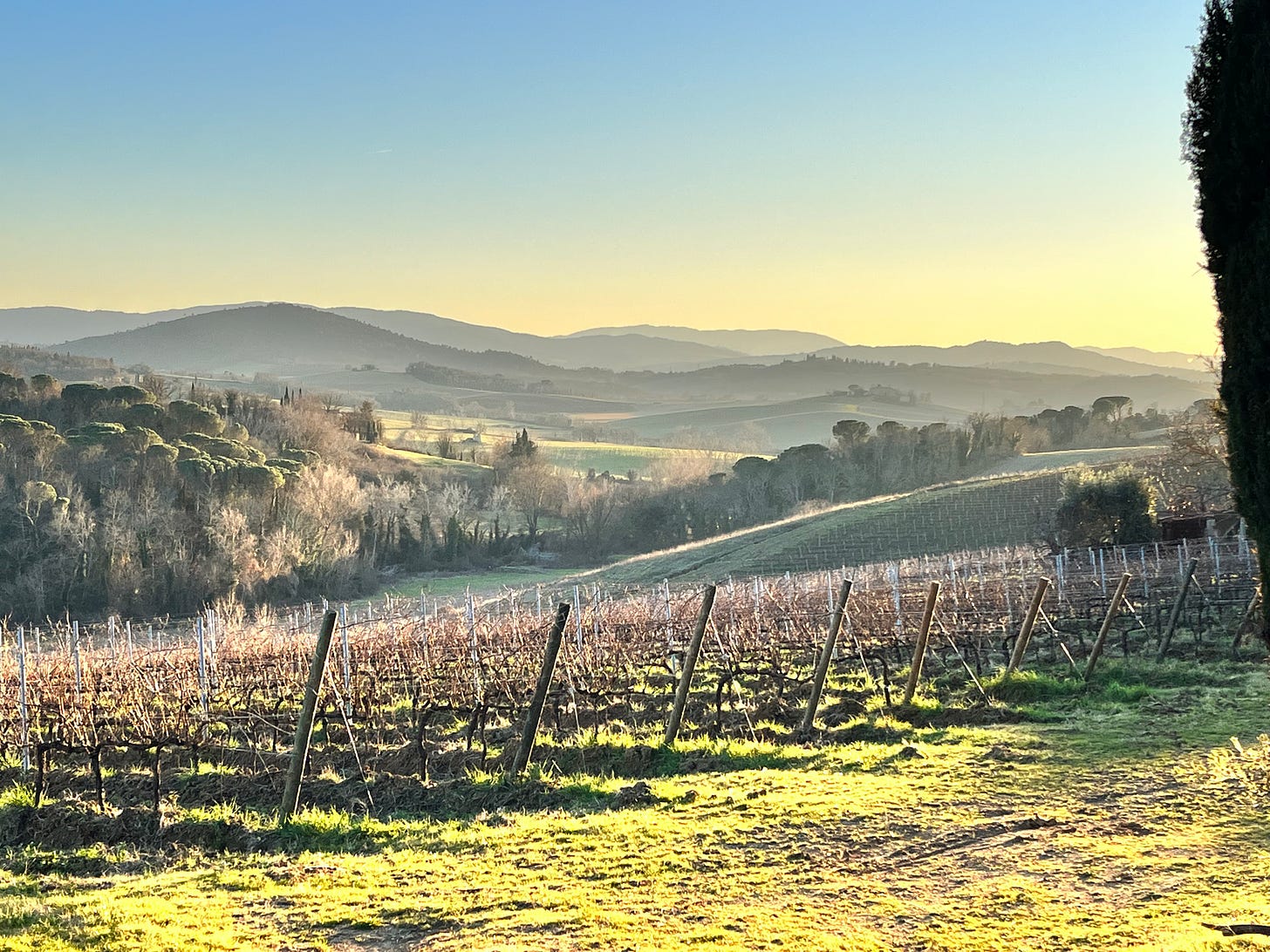

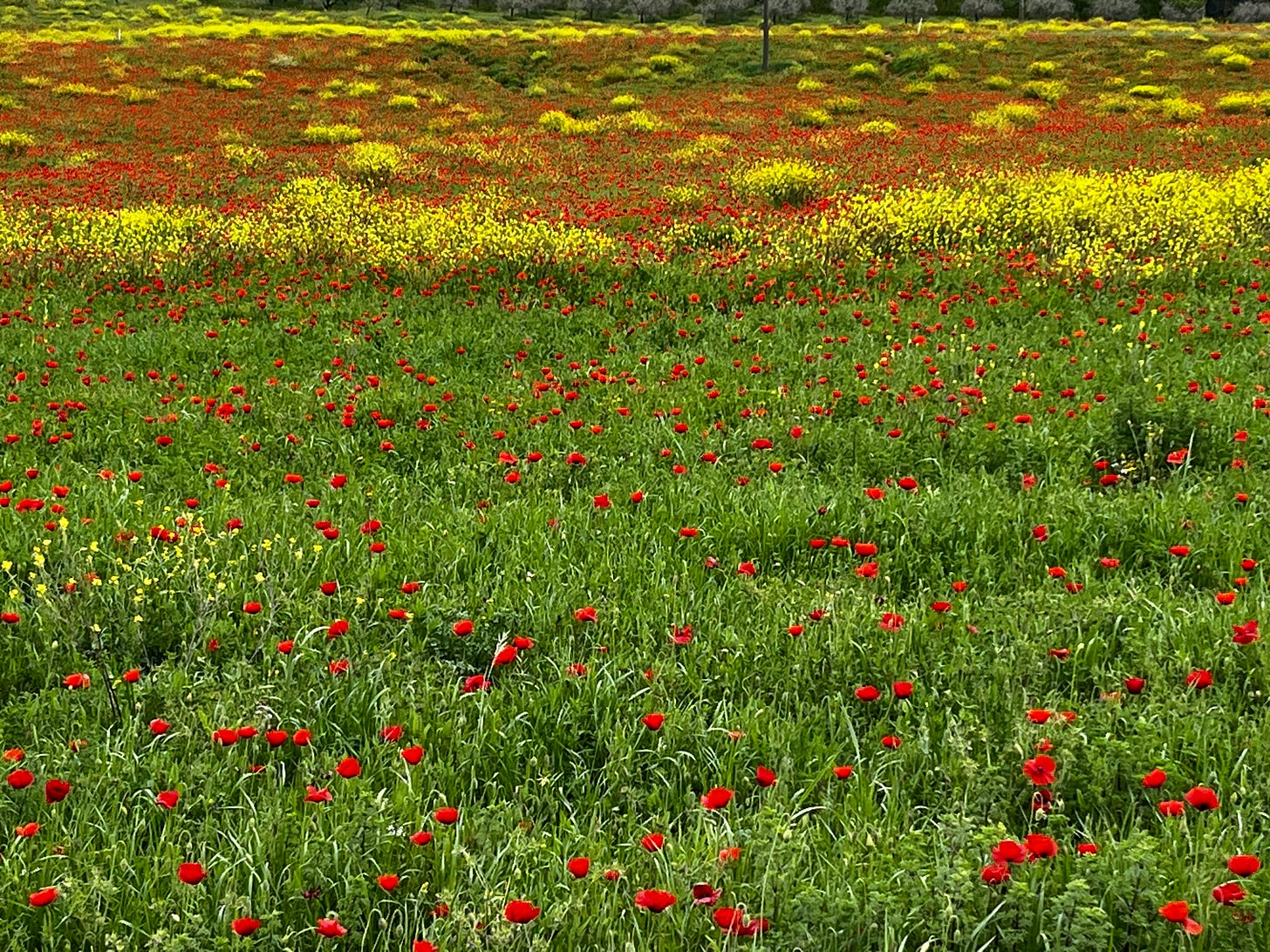

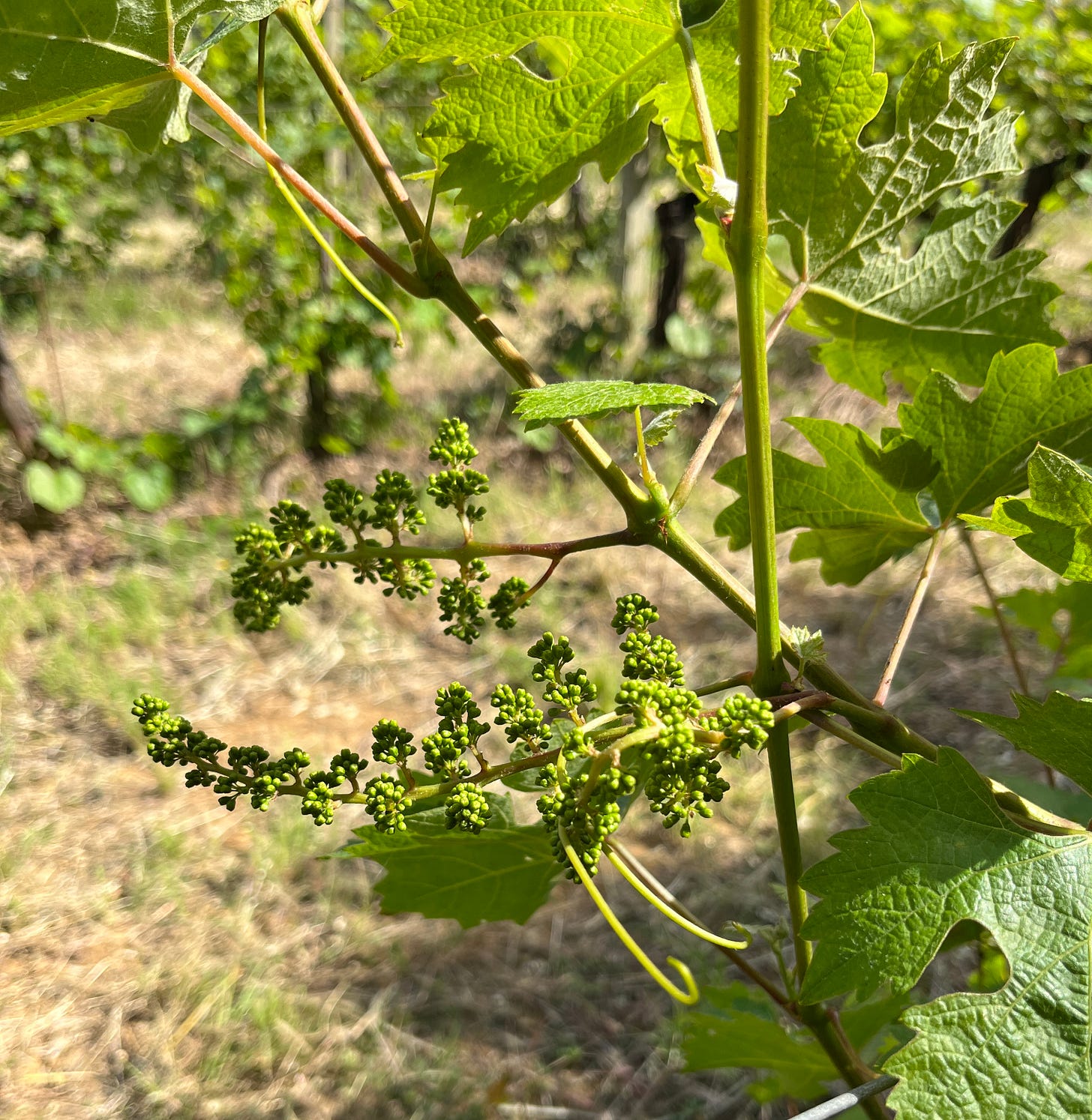
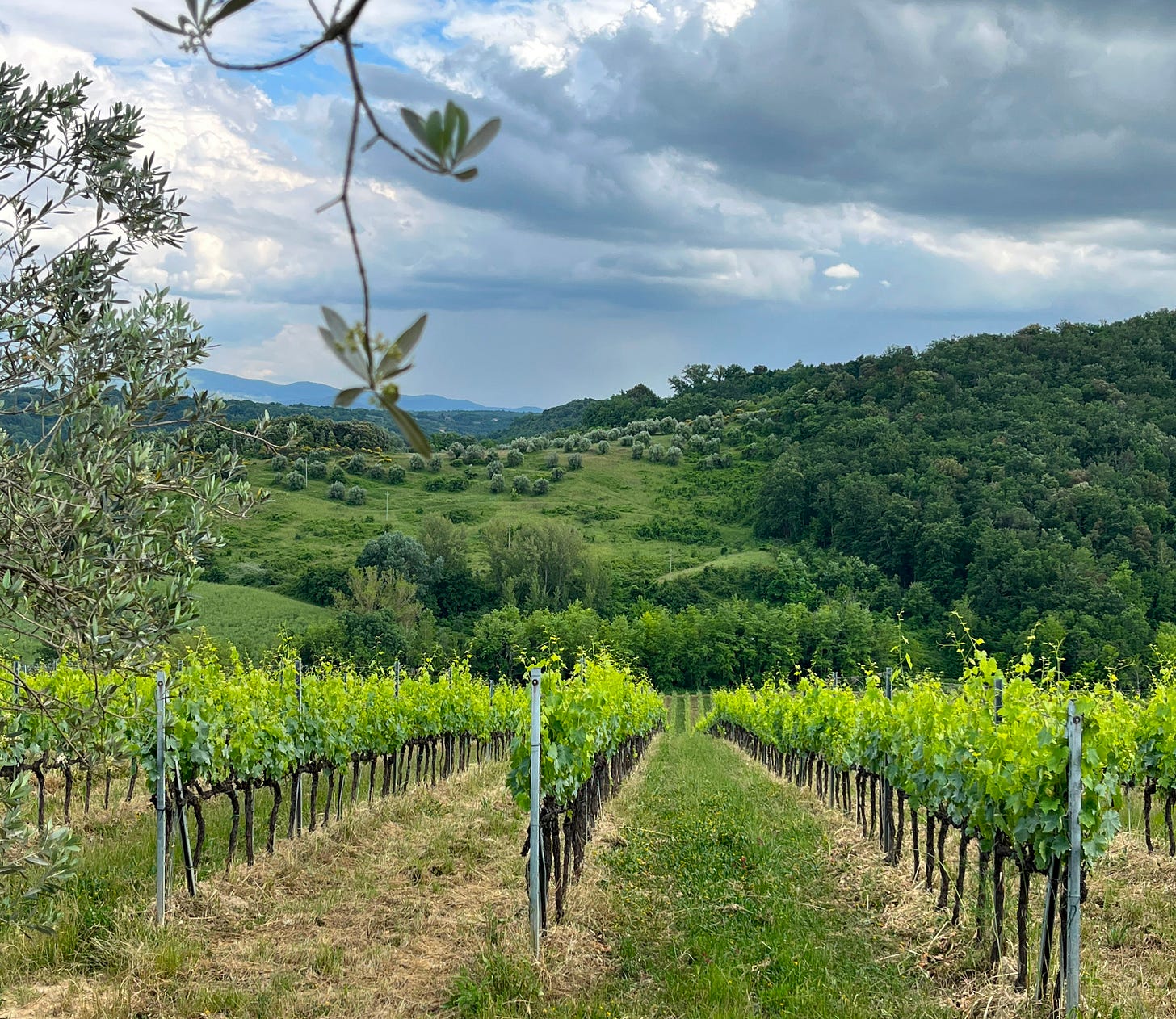
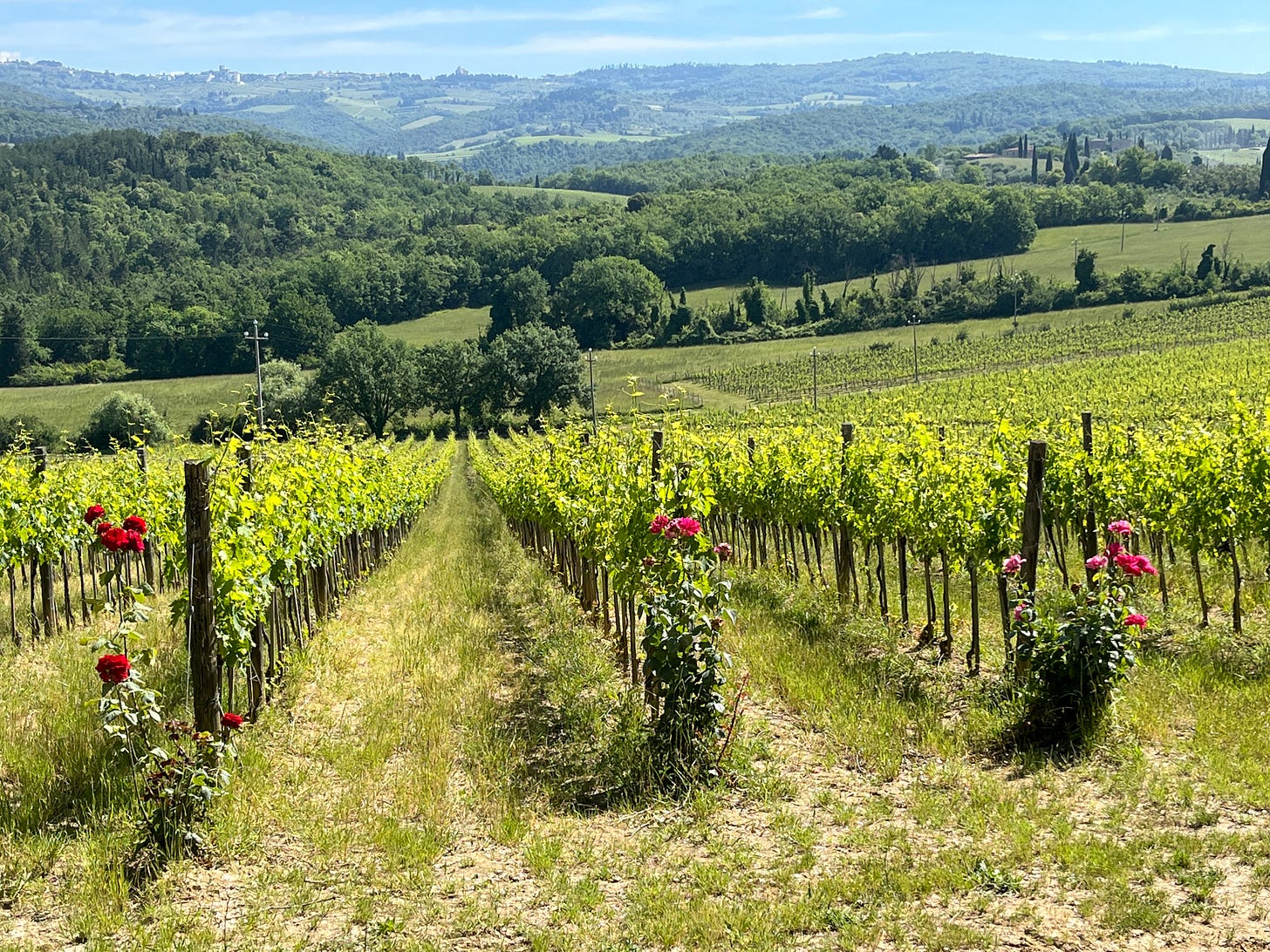
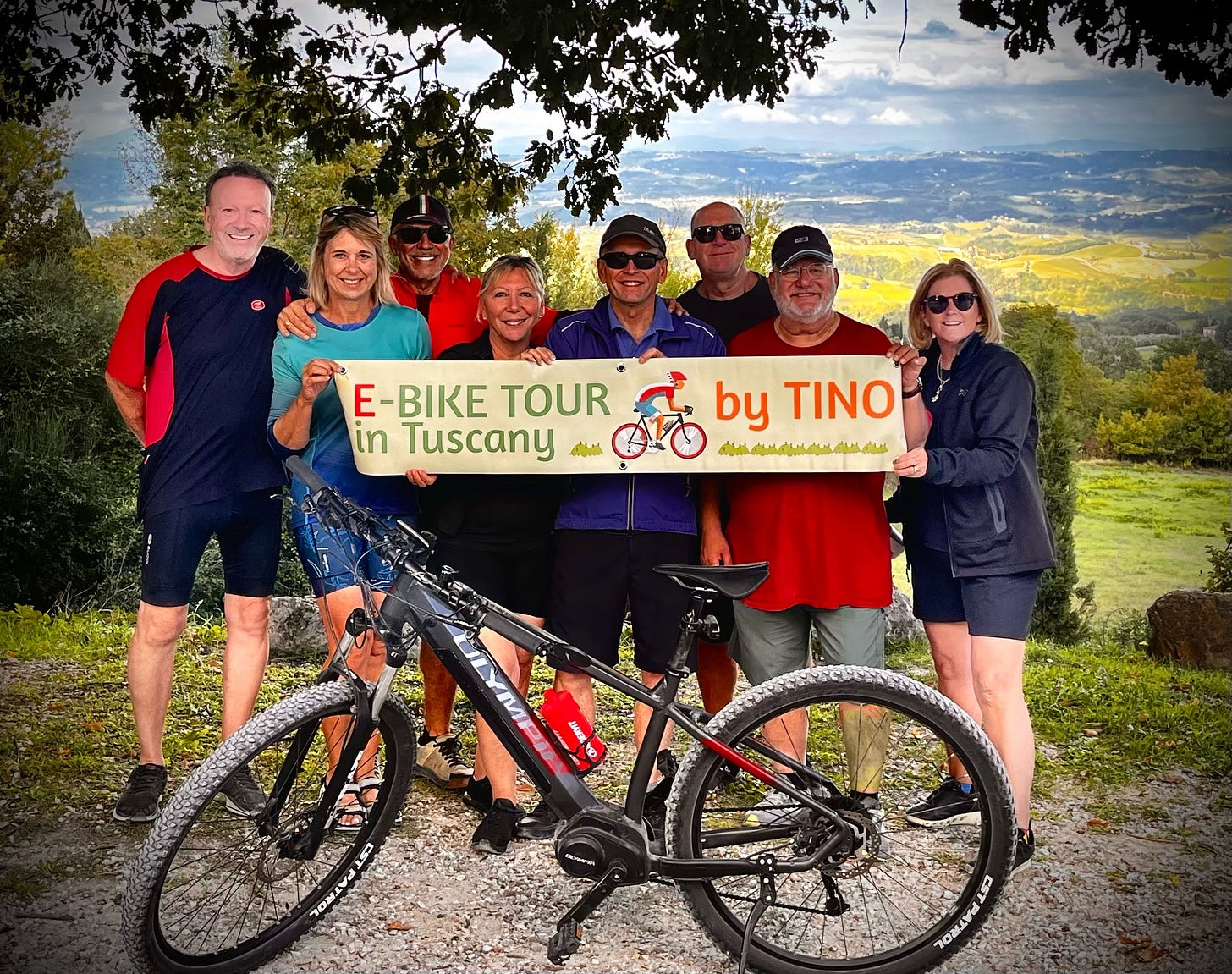

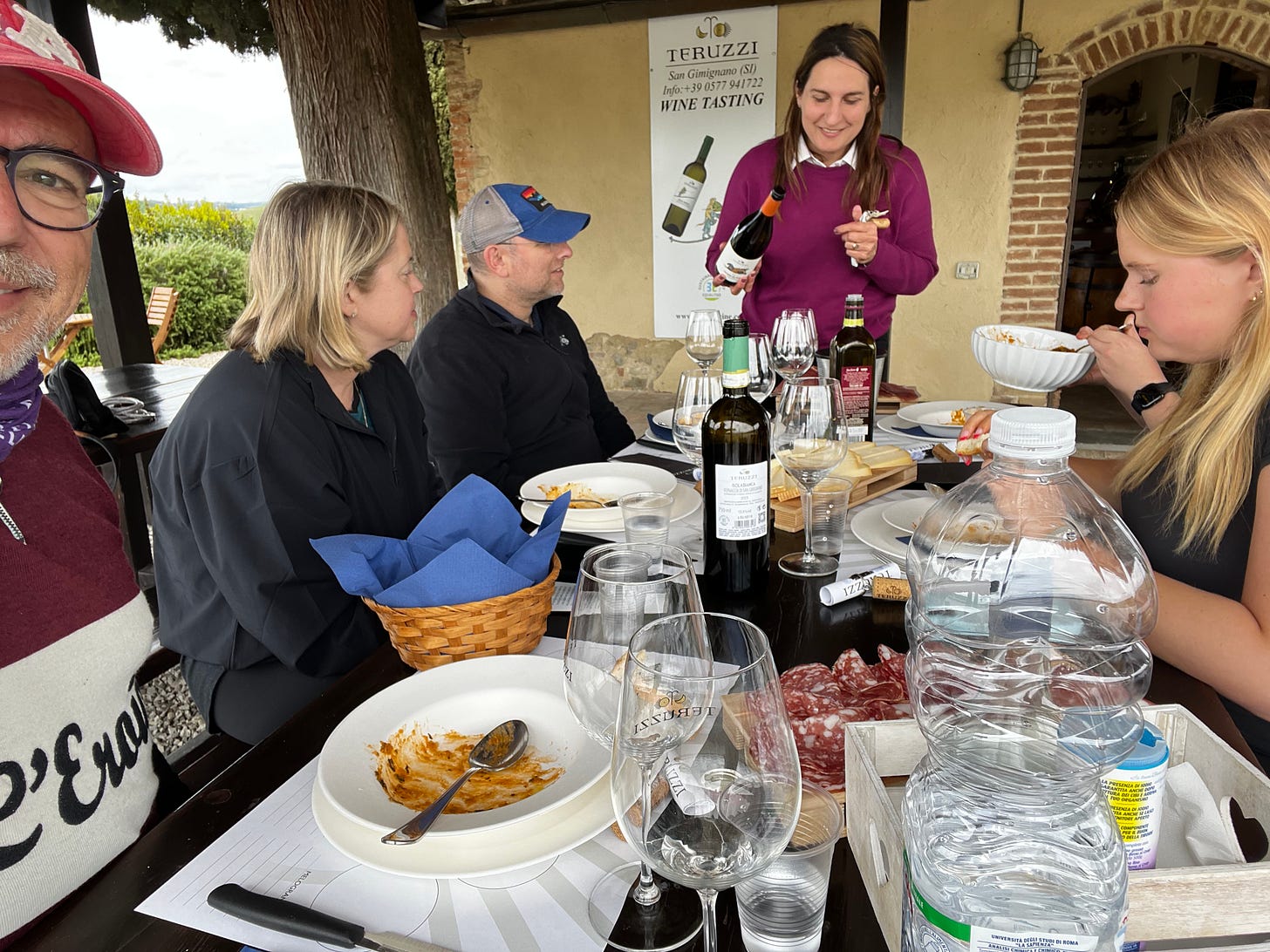

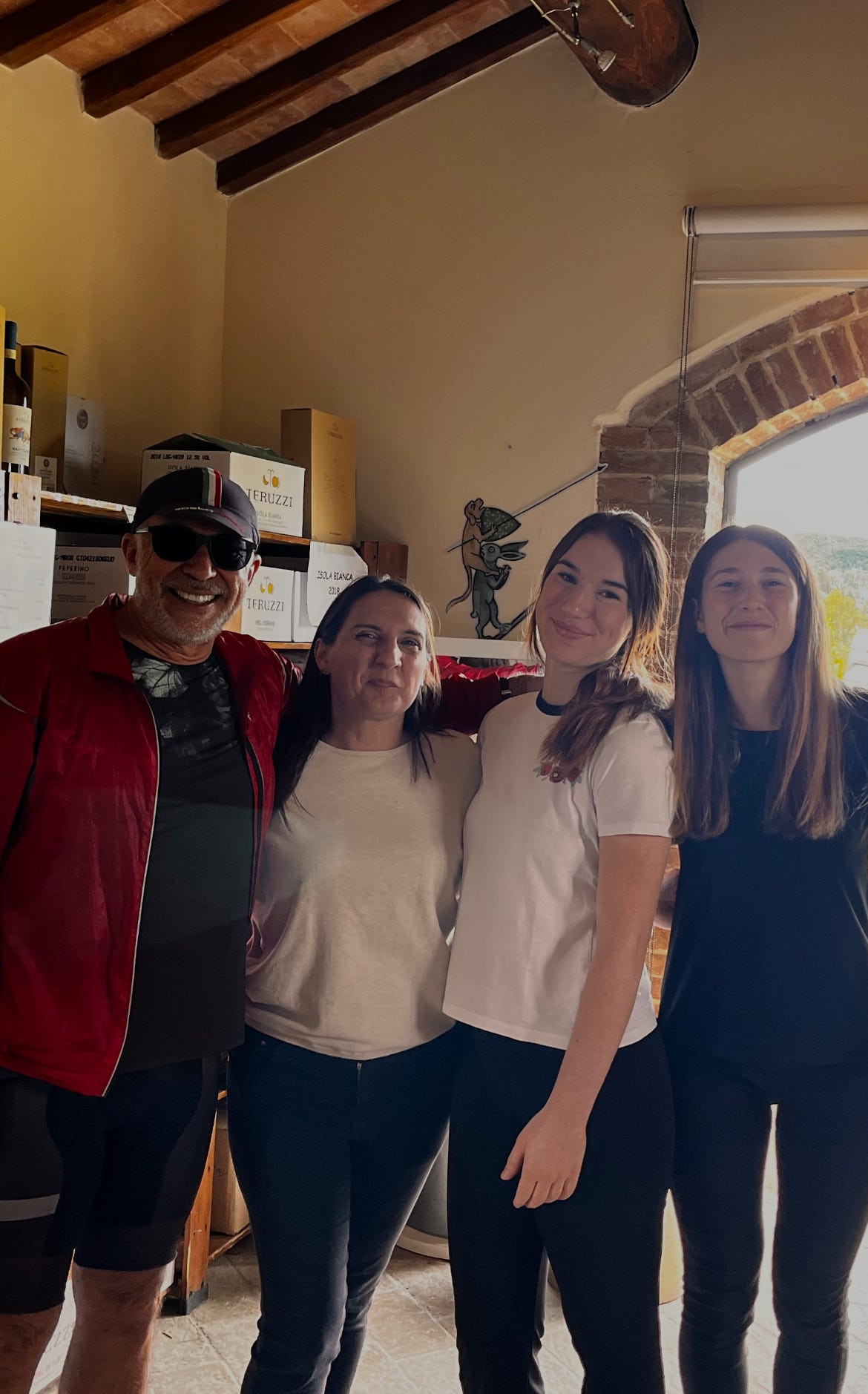






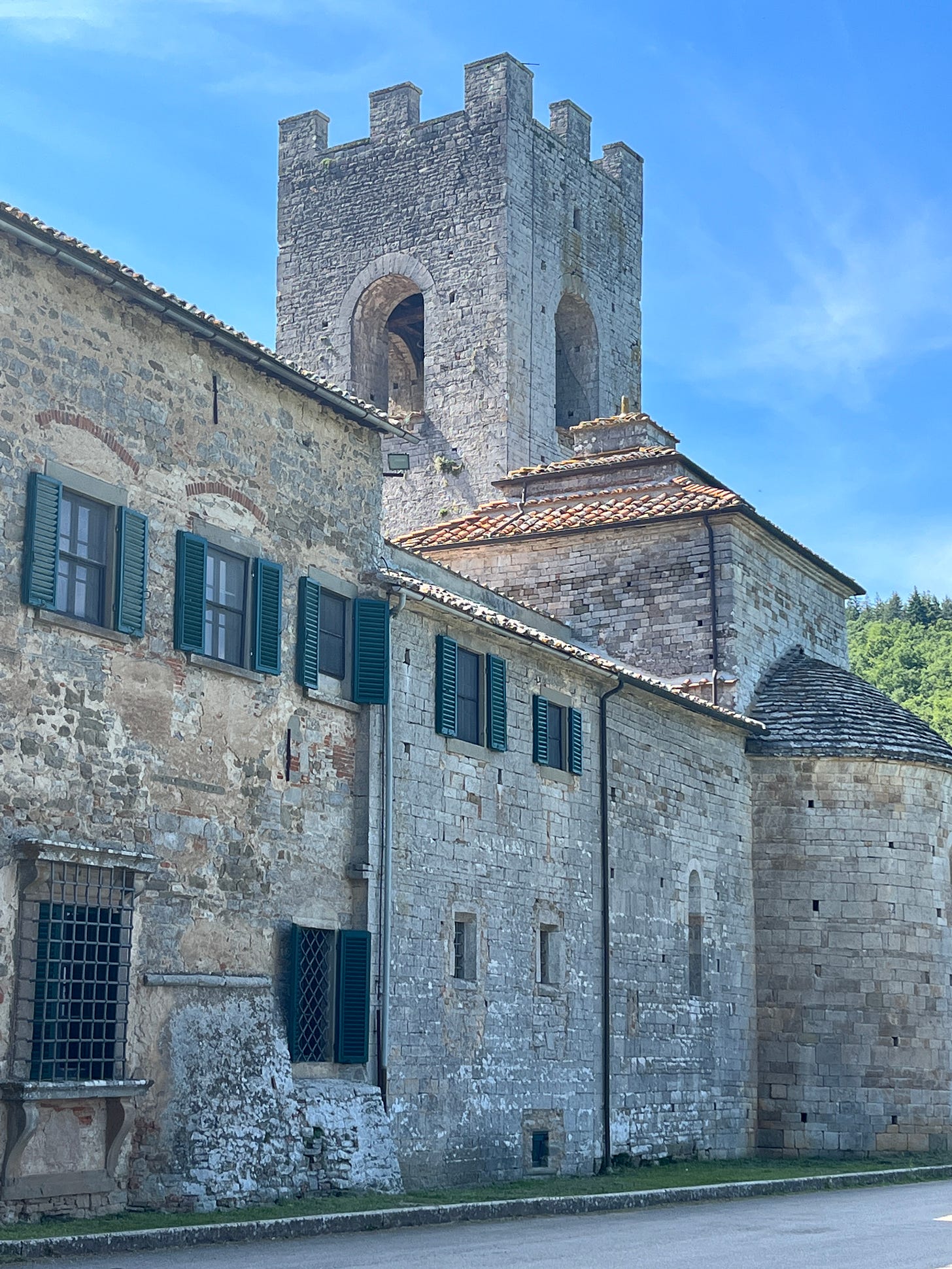
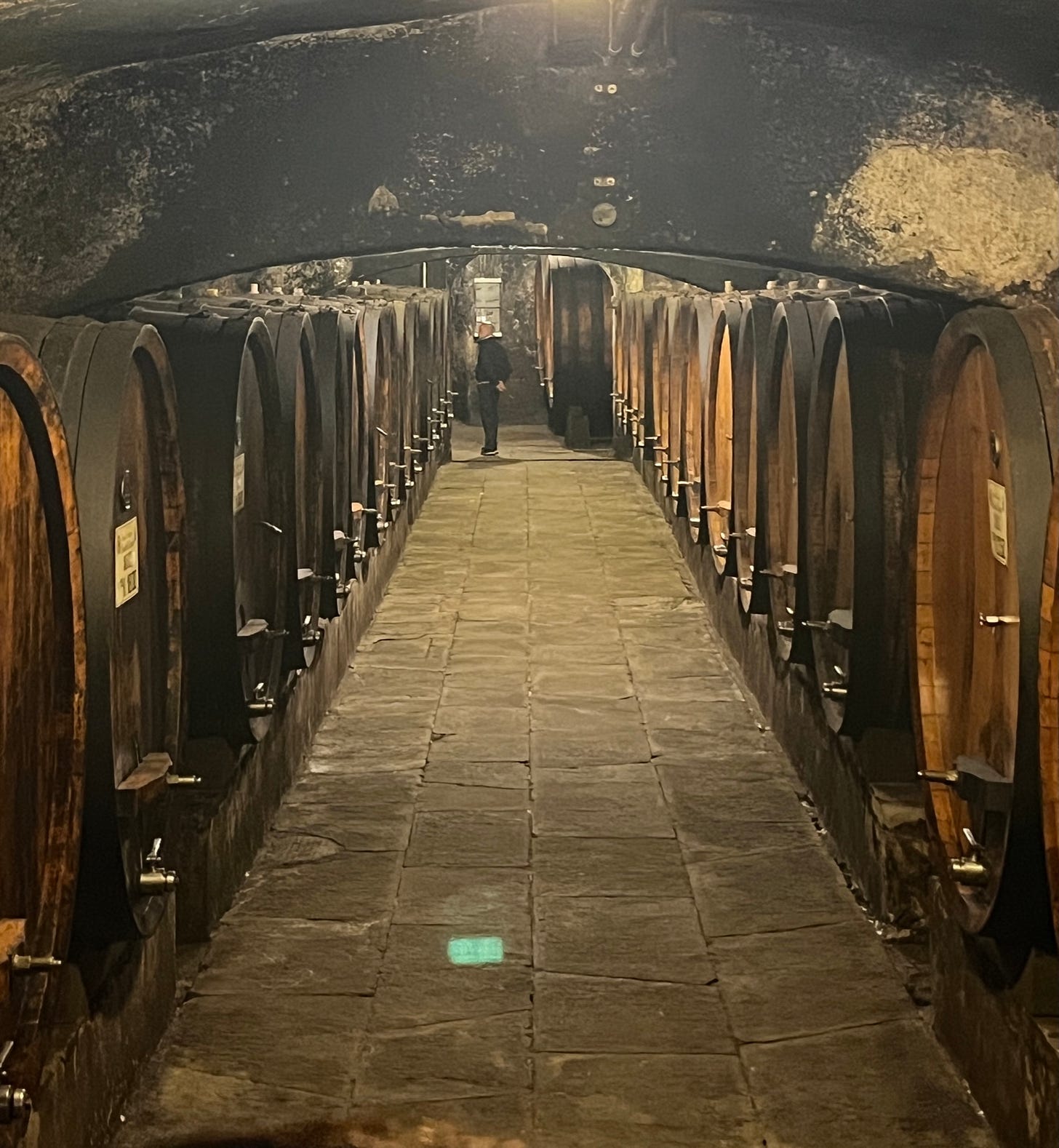


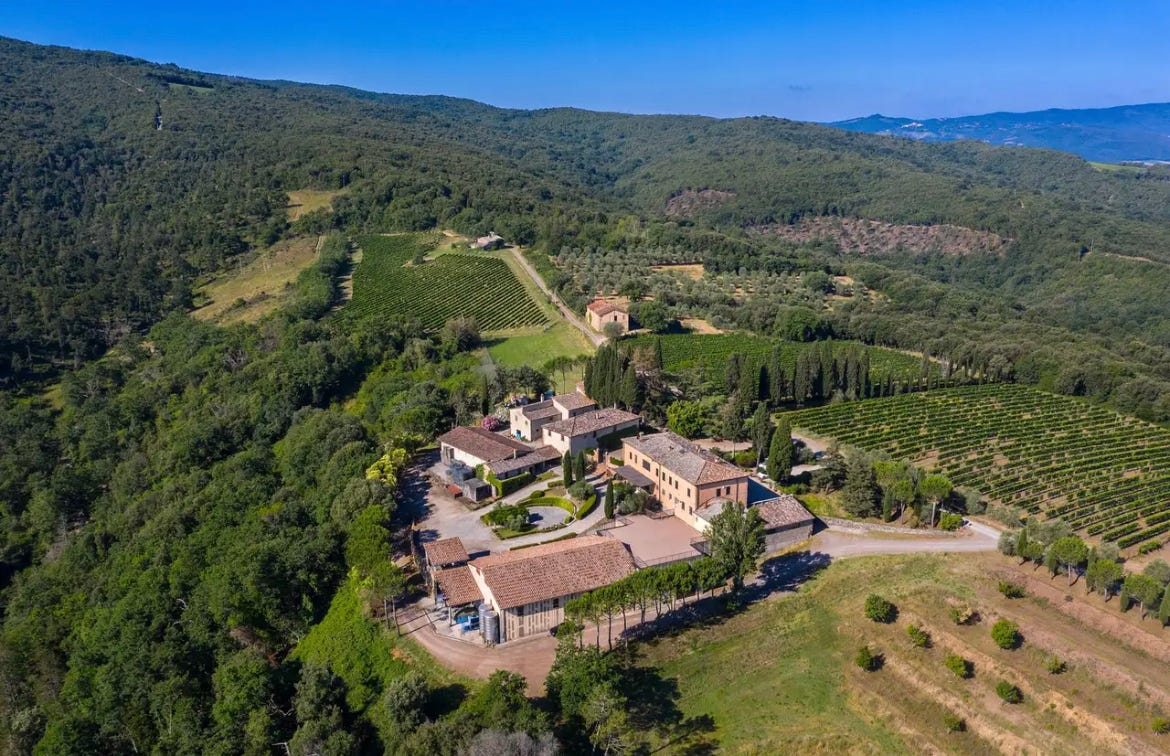
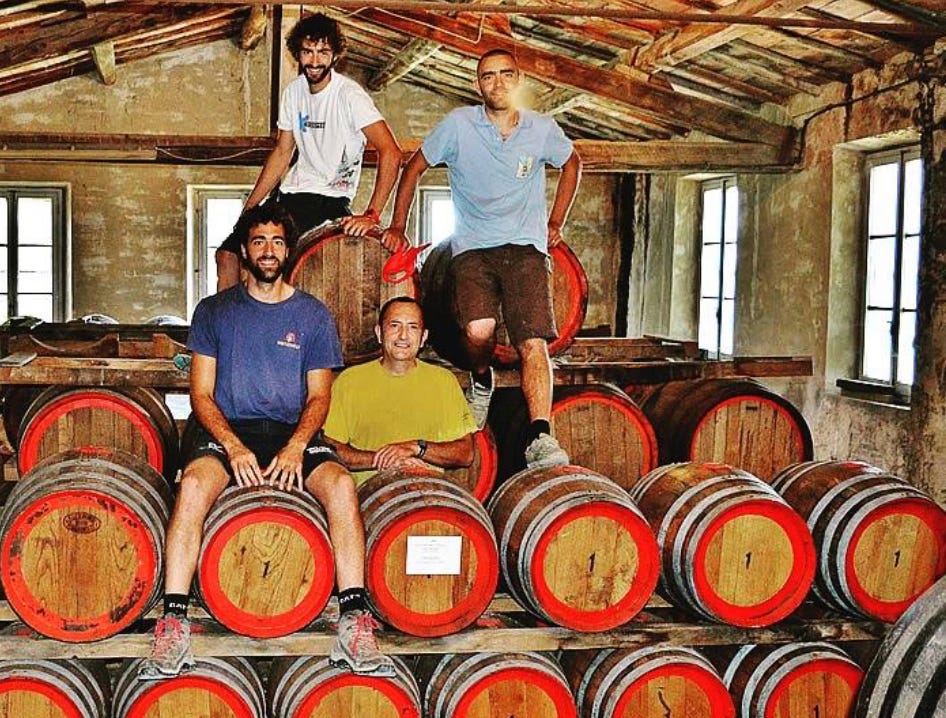
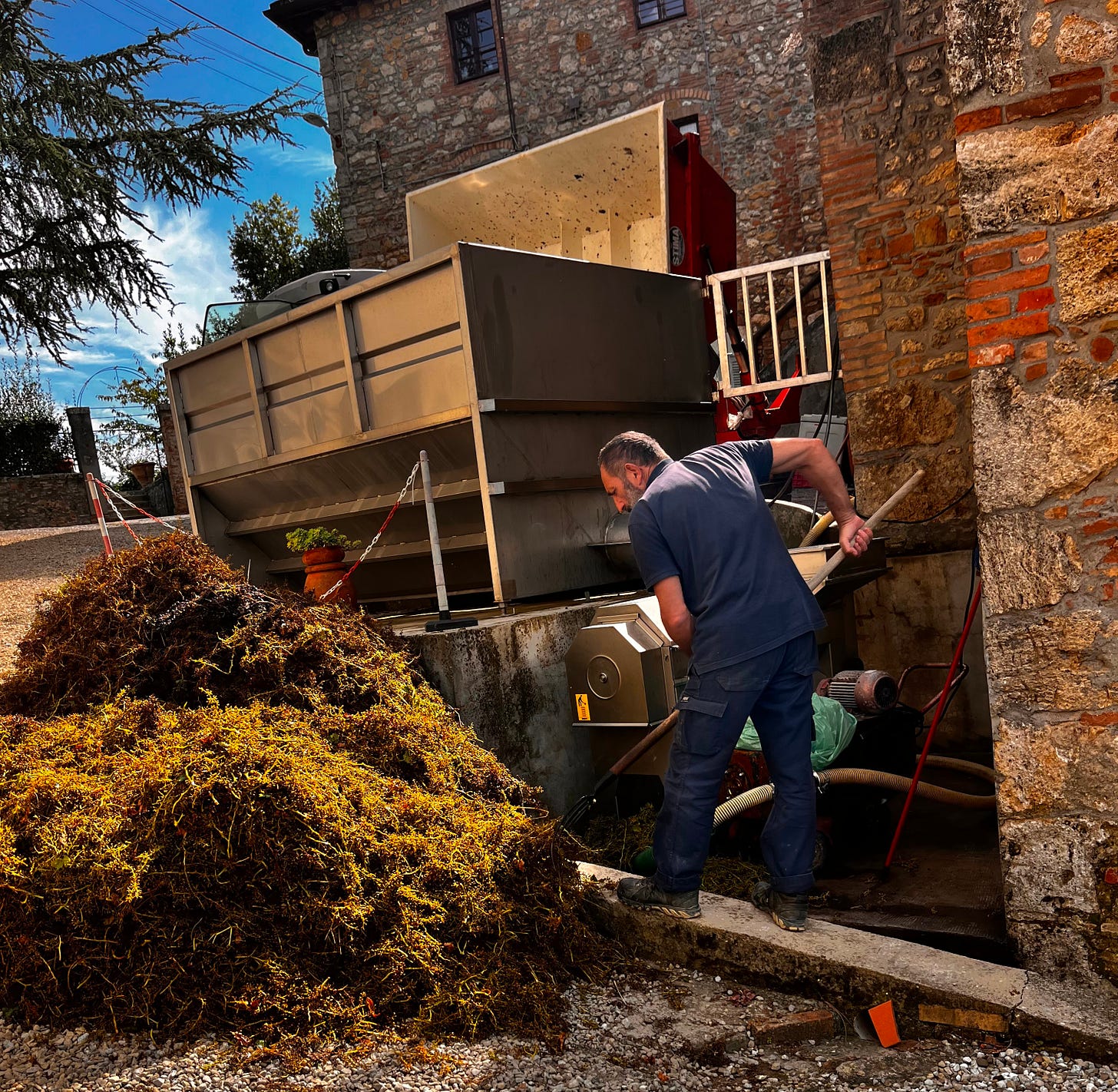

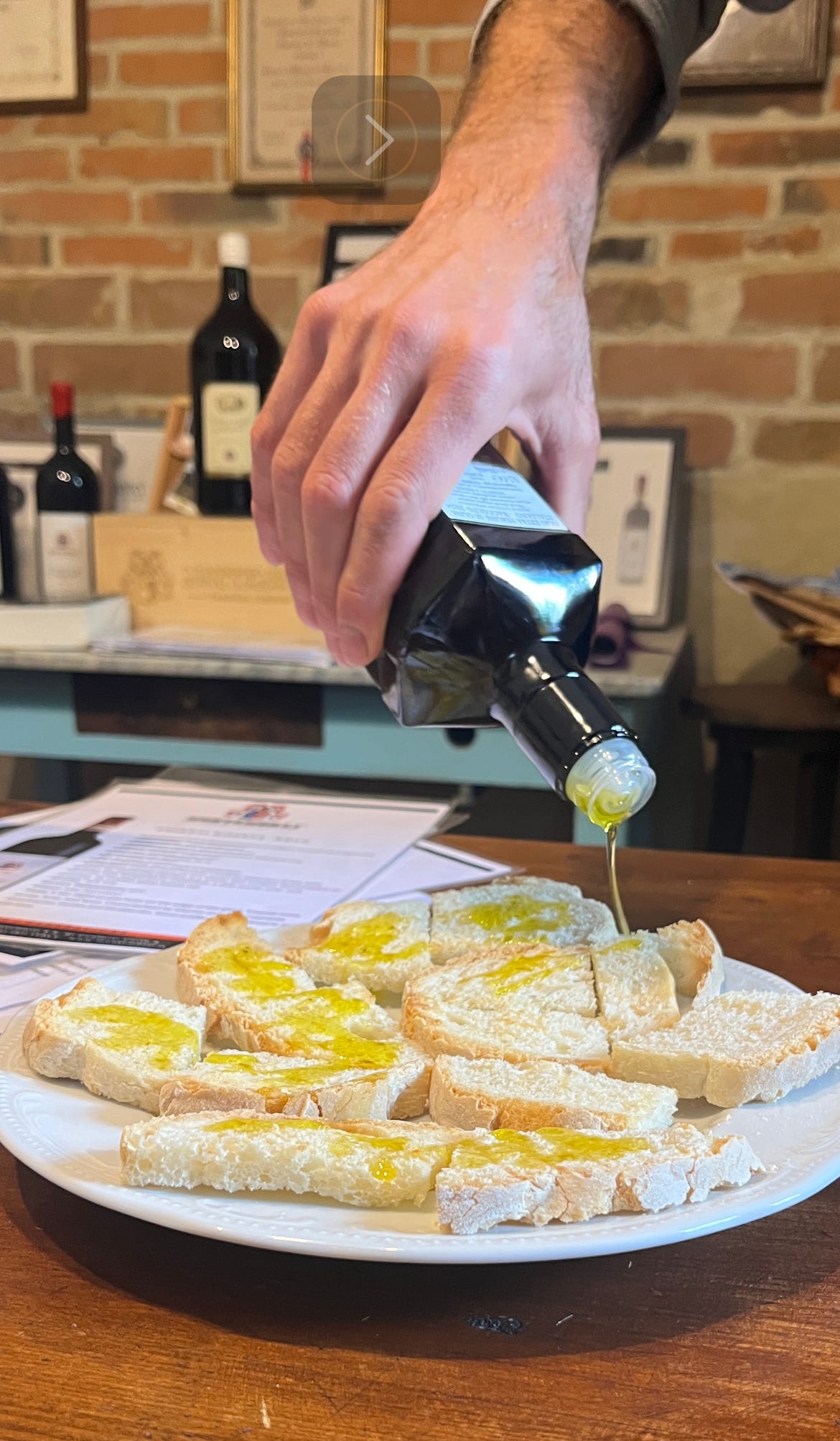
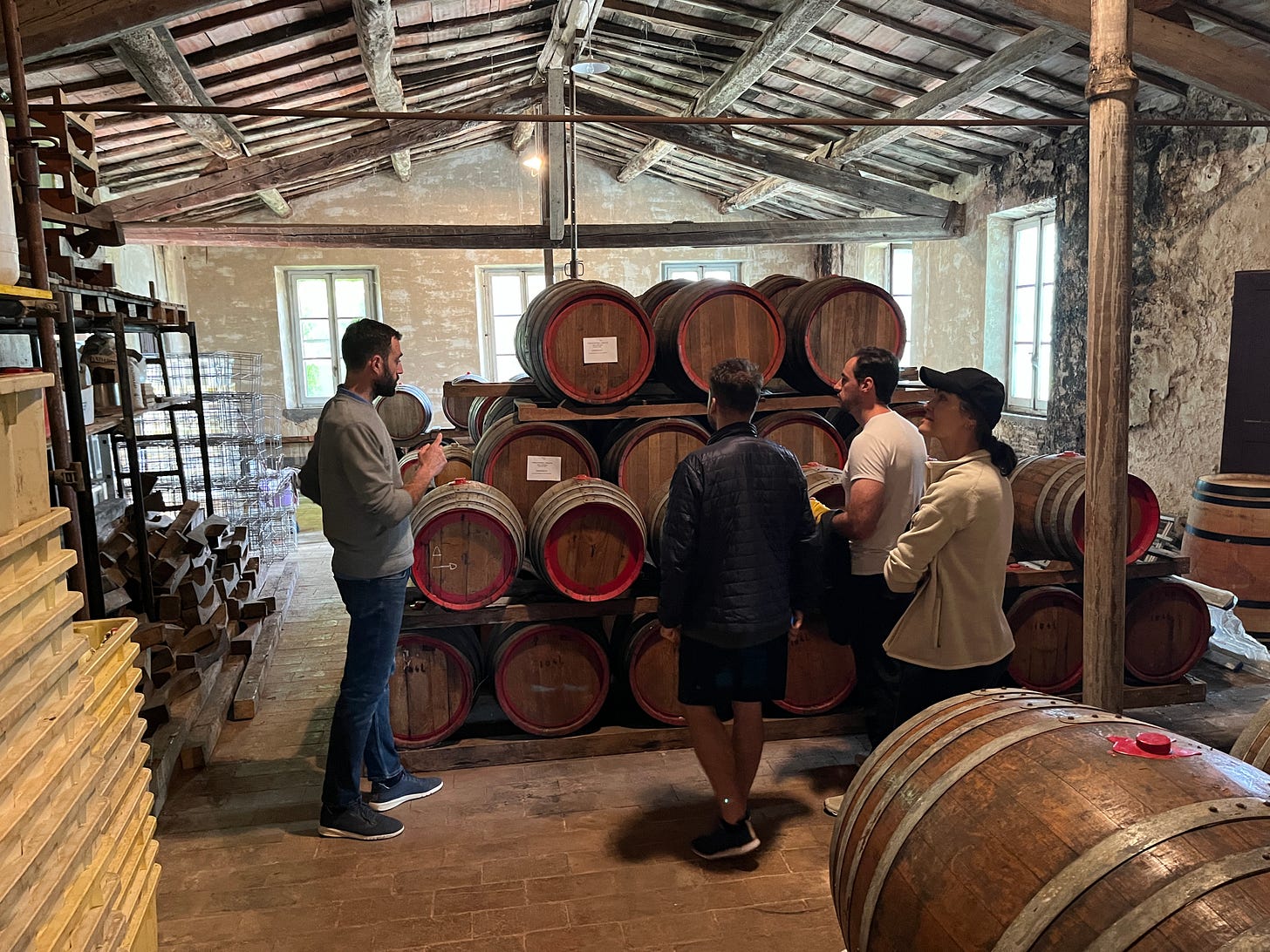
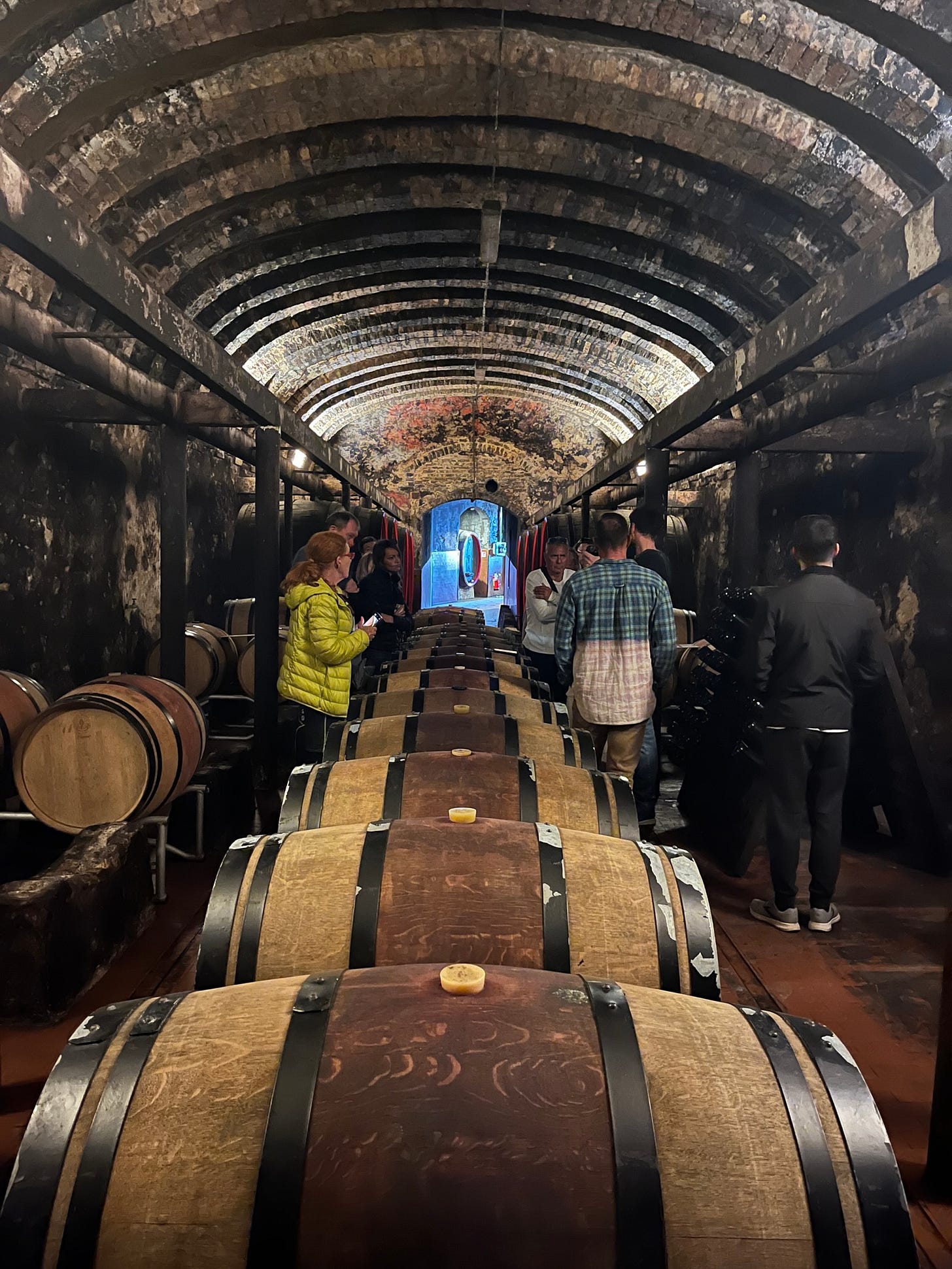
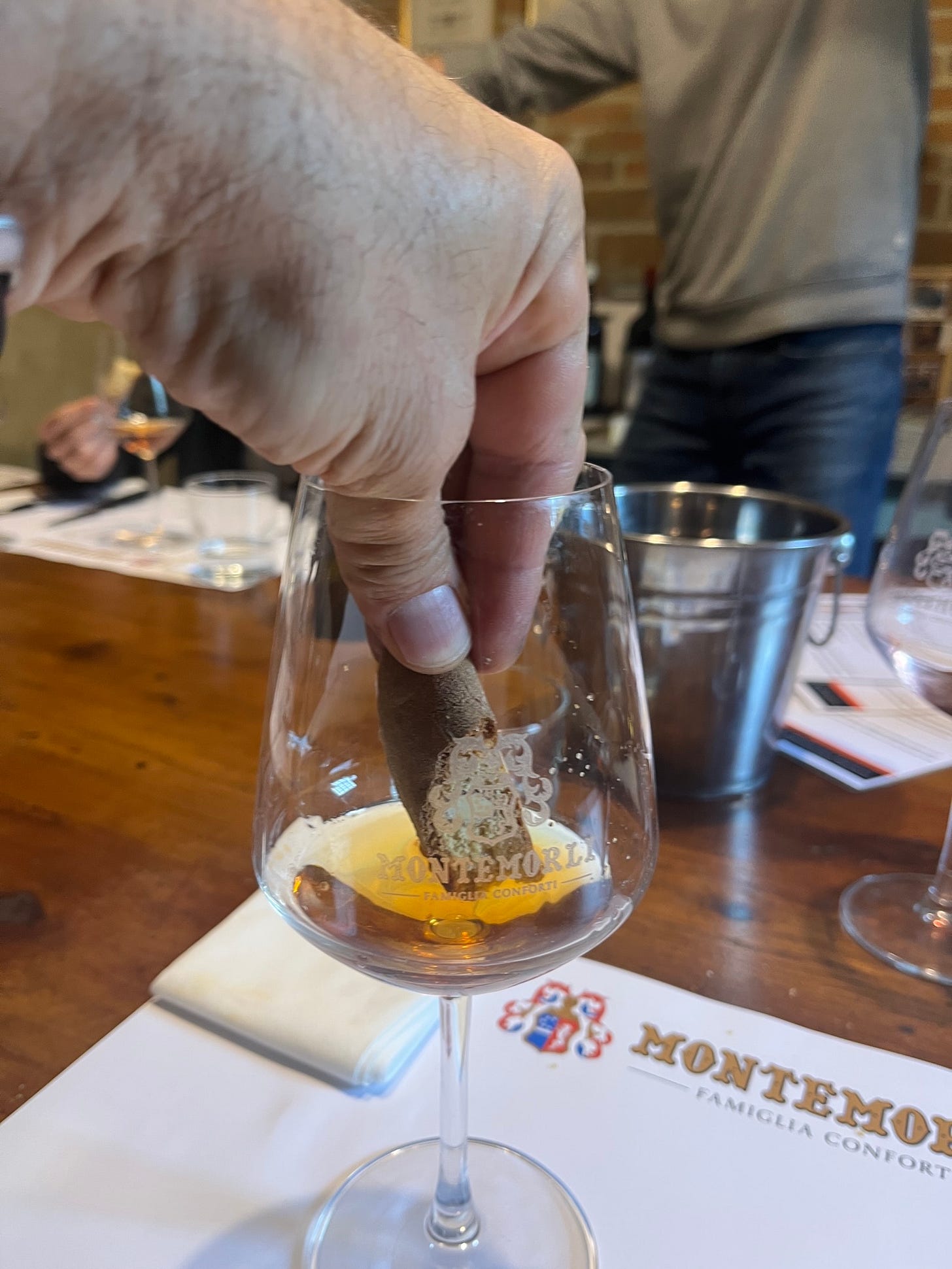
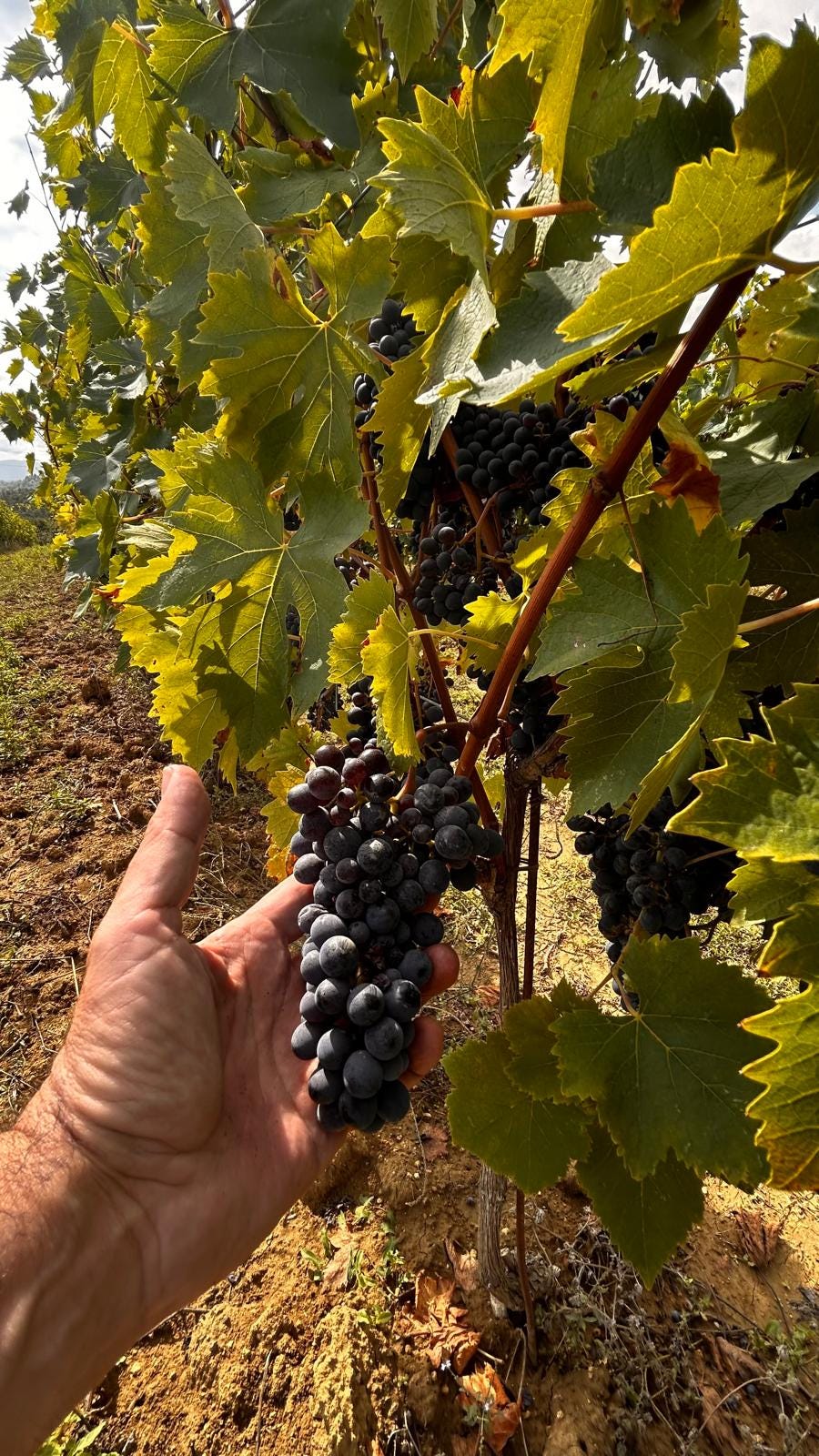
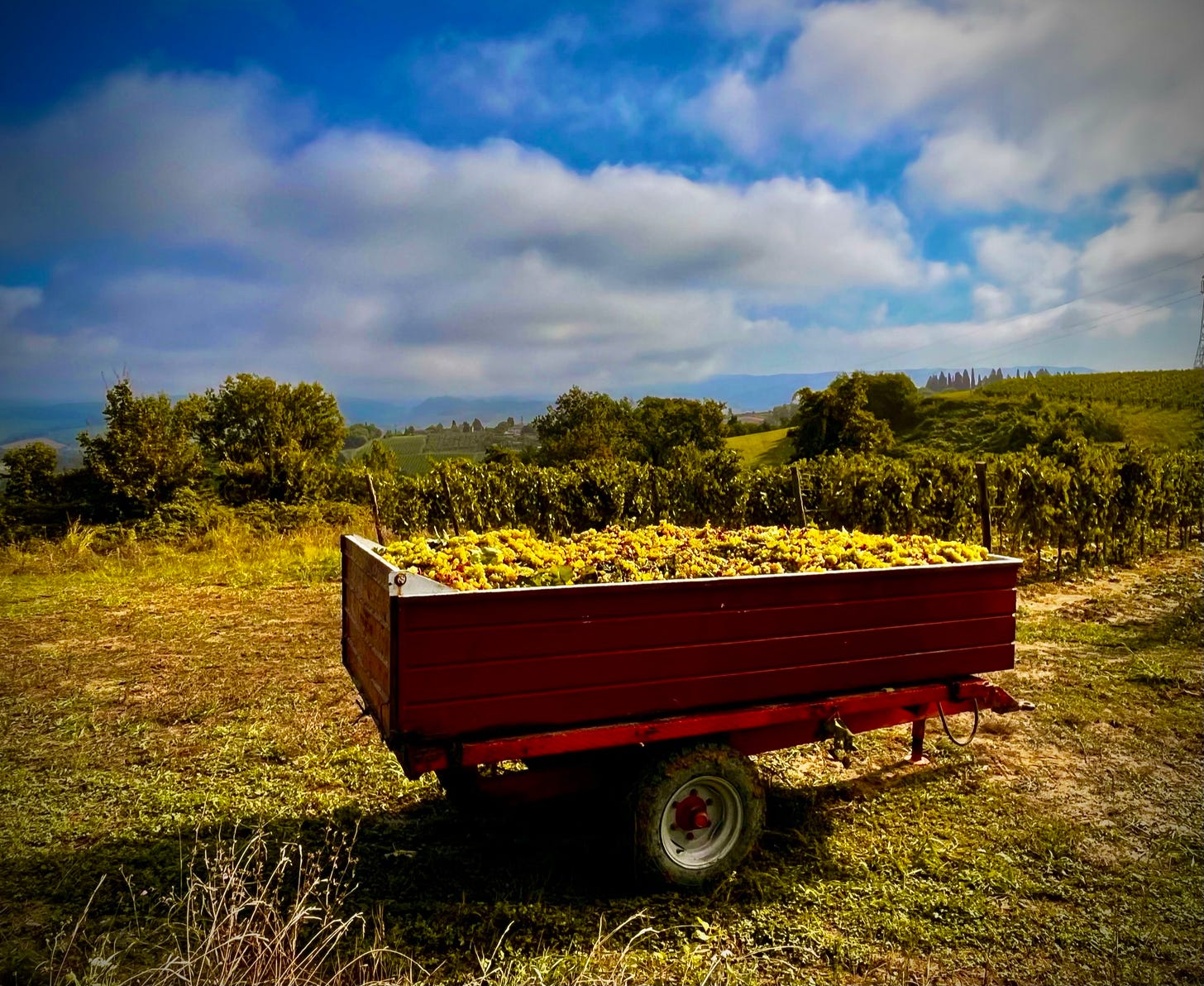

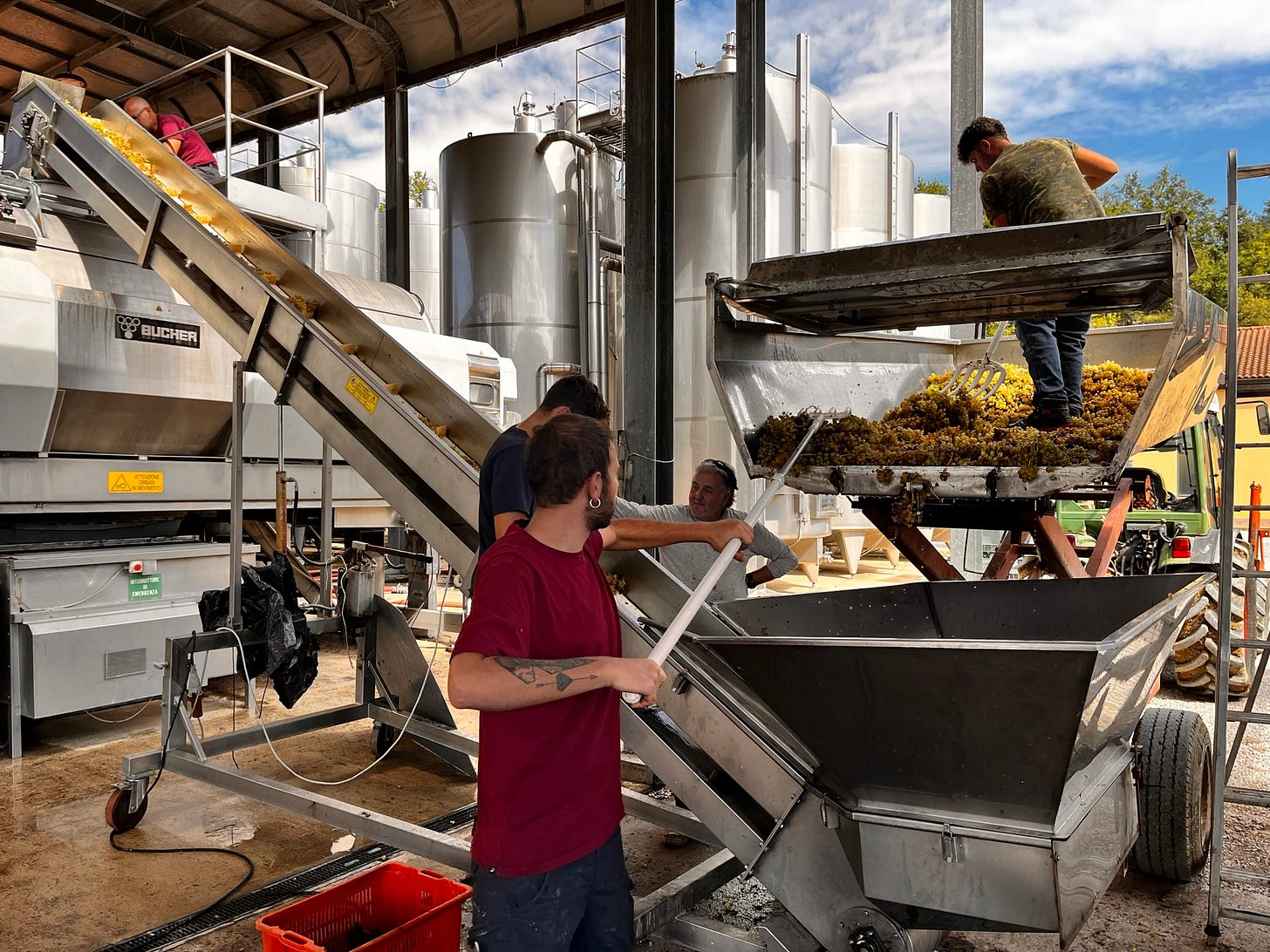
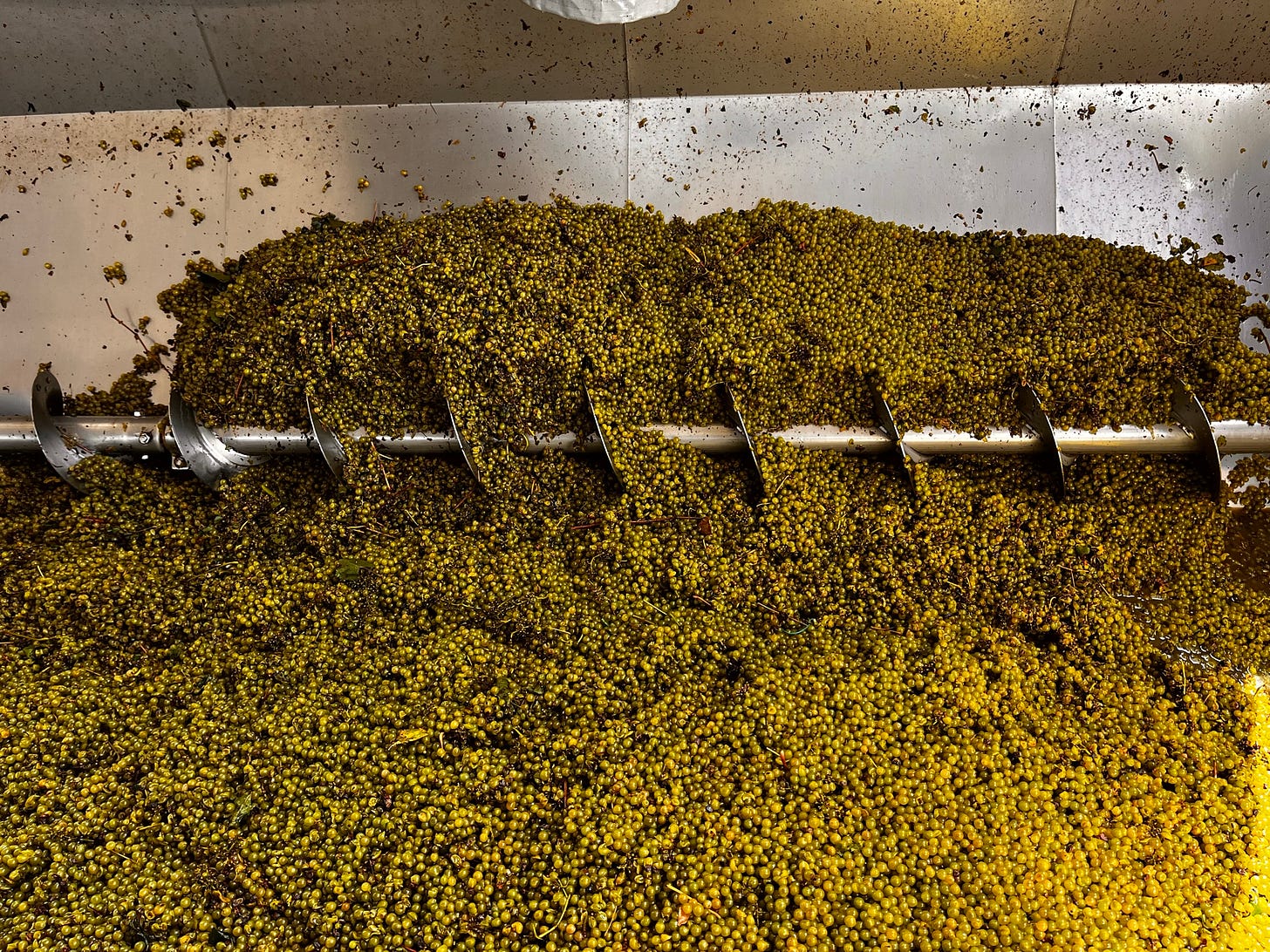

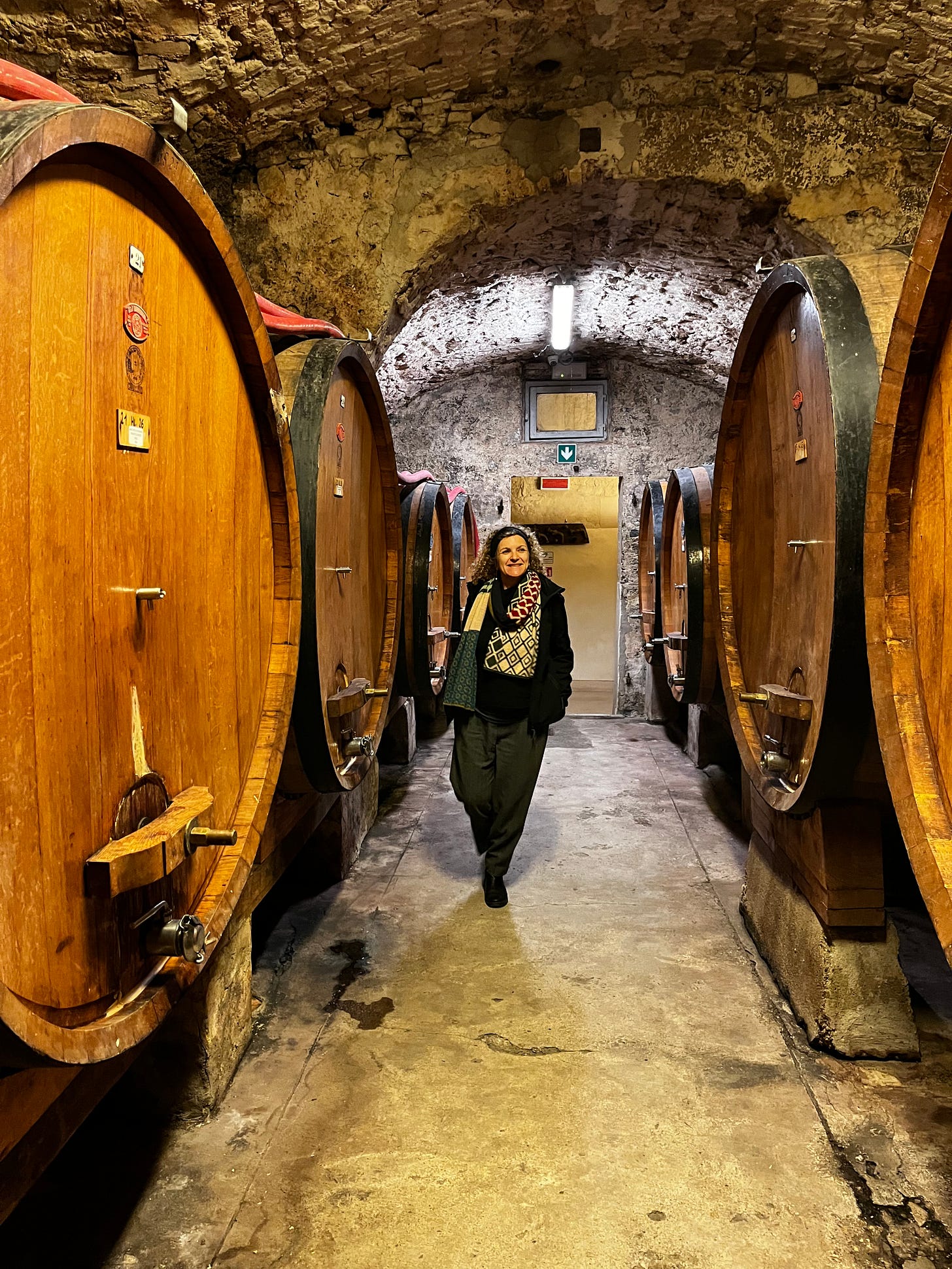



I like all your writings. However, this one makes me want to come back to Tuscany at a certain point. Thanks for sharing.
Your beautiful writing evoked everything so well I could taste the vino and ignore any resulting sore muscles!